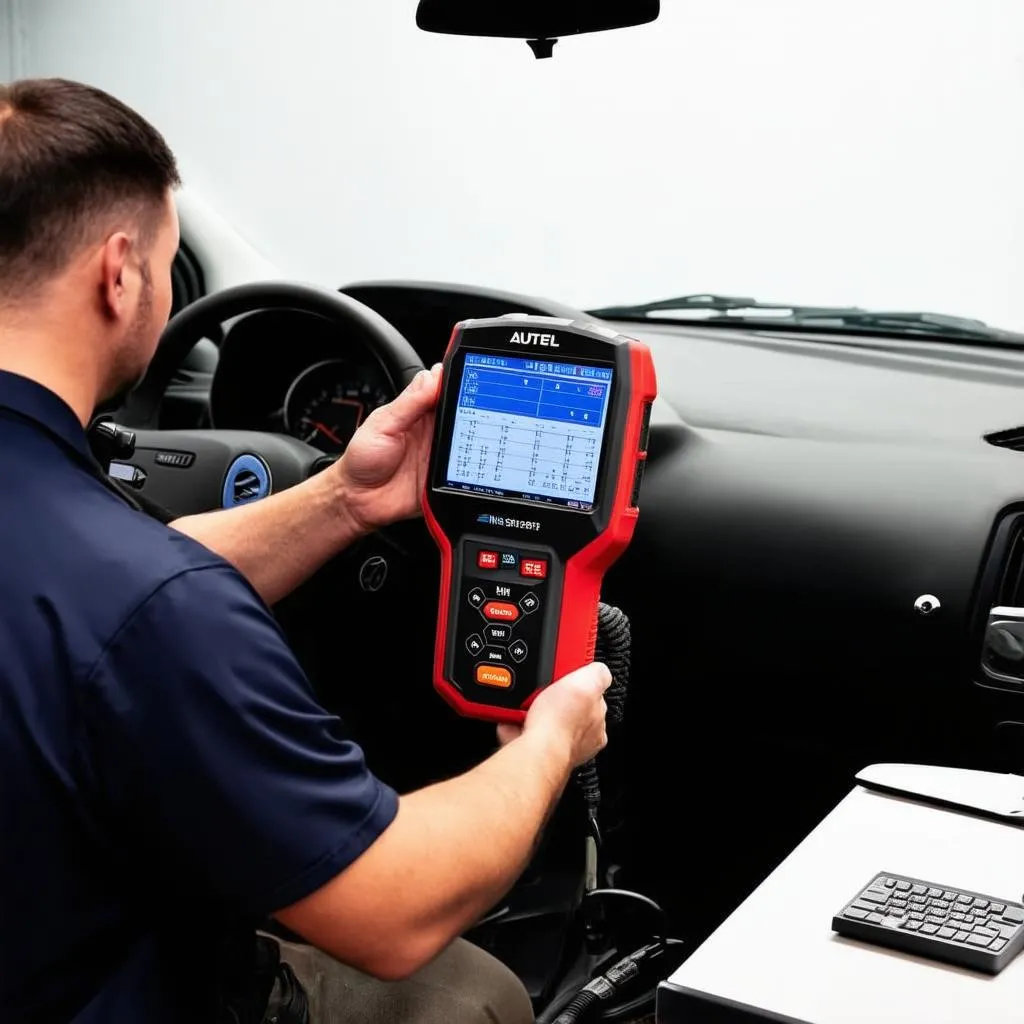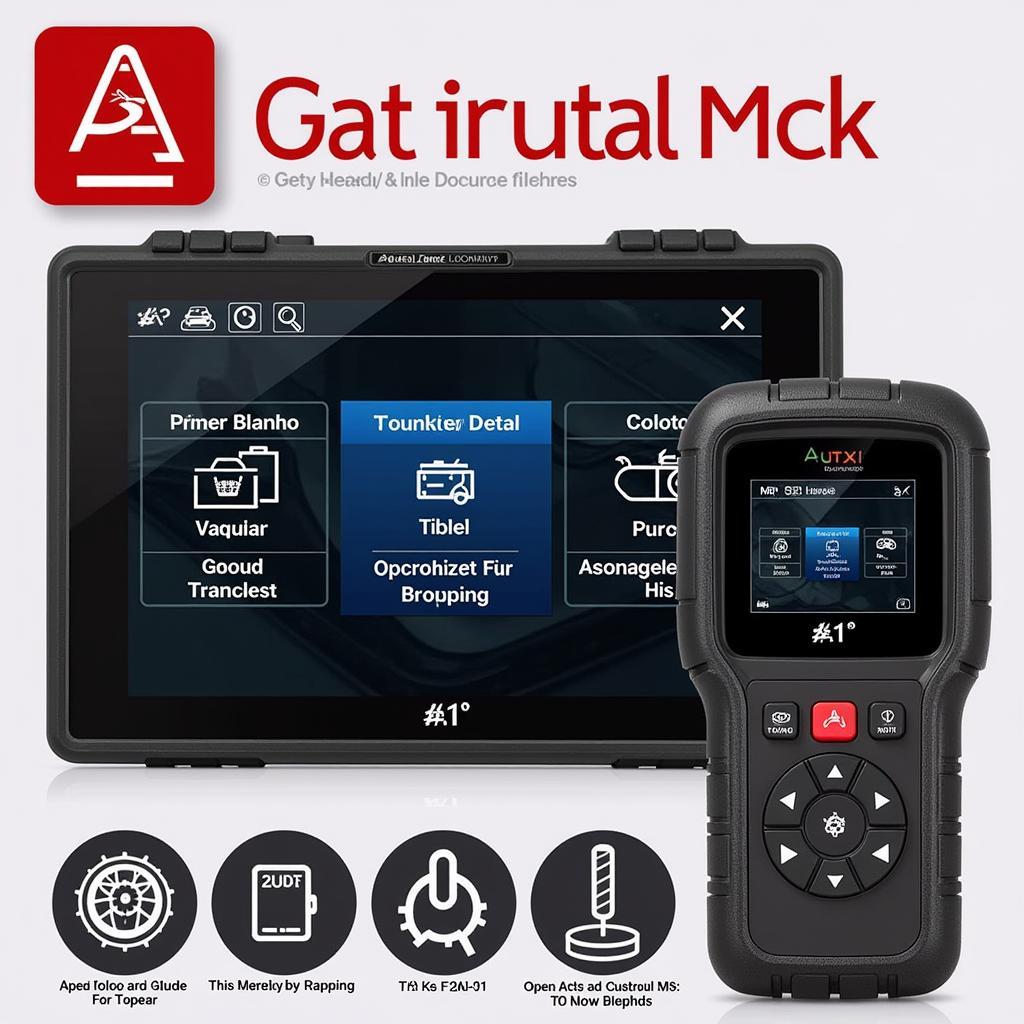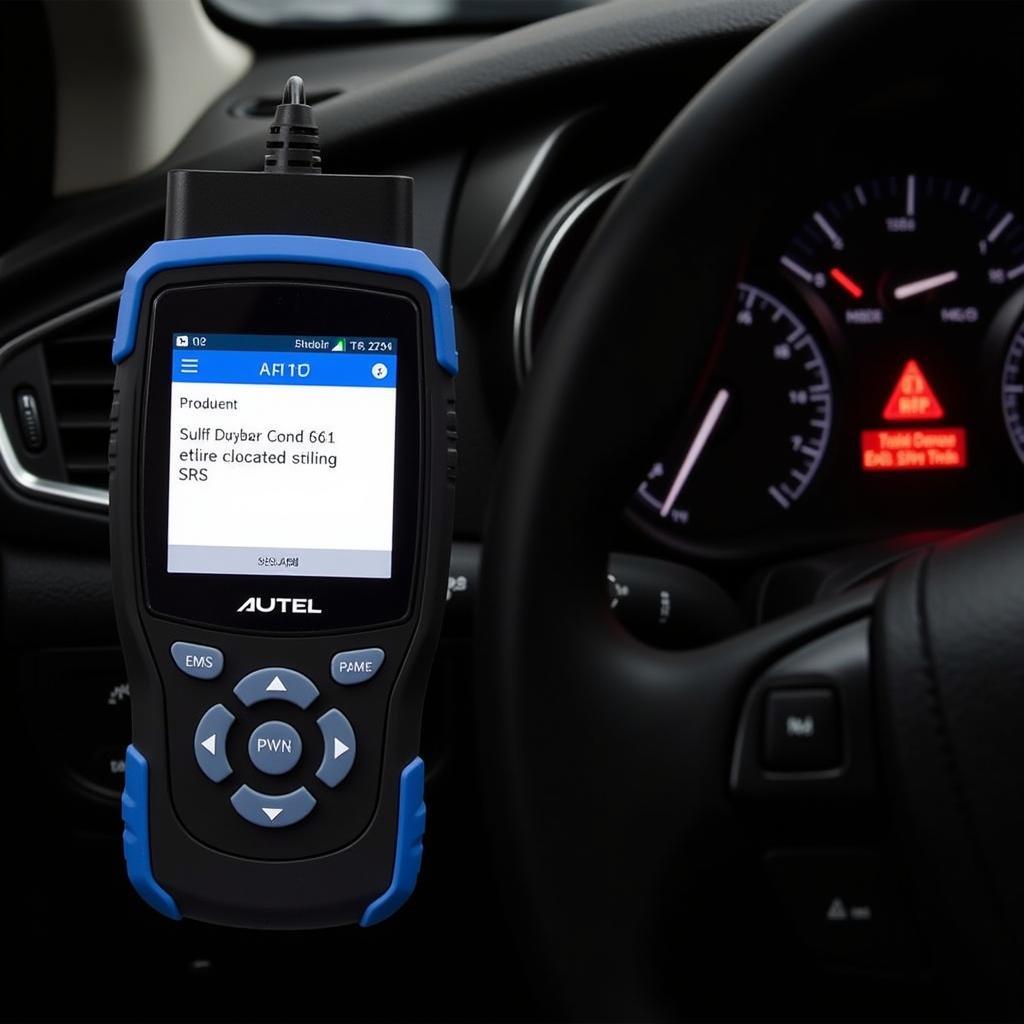Ever found yourself staring at your Autel scanner, wondering why on earth it has that seemingly ancient OBD1 connector? You’re not alone! Many car enthusiasts, both seasoned and budding, have scratched their heads over this. Let’s unravel this mystery and explore the world of Autel scanners and those intriguing OBD1 connectors.
Unpacking the Question: More Than Meets the Eye
Before we jump into the “why,” let’s clarify what we’re dealing with. Autel scanners are powerful diagnostic tools, especially renowned for their prowess with European cars. They’re like the Sherlock Holmes of the automotive world, sniffing out issues and helping you understand your car’s health.
OBD connectors, on the other hand, are the points of access for these diagnostic tools. OBD1, the older standard, and OBD2, its more modern counterpart, have significant differences. So, why would a modern scanner include an OBD1 connector?
Different Perspectives, One Common Thread
-
The Mechanic’s View: Imagine you’re a mechanic in a bustling Chicago garage, and a classic 1995 Mercedes-Benz rolls in. Your trusty Autel, equipped with an OBD1 connector, becomes your lifeline, allowing you to communicate with the car’s systems, despite its age.
-
The Engineering Perspective: From an engineering standpoint, including an OBD1 connector broadens the scanner’s compatibility. It’s like having a universal translator for cars! This versatility is a significant selling point, especially for professionals dealing with a wide range of vehicles.
-
The Economic Angle: For Autel, offering a tool that caters to both older and newer vehicles makes economic sense. It expands their market reach and solidifies their position as a comprehensive diagnostic solution provider.
 Autel scanner with OBD1 connector plugged into a car
Autel scanner with OBD1 connector plugged into a car
The Answer Lies in Compatibility
The short answer? Versatility!
Autel includes OBD1 connectors to ensure their scanners can communicate with a broader range of vehicles, including those manufactured before the widespread adoption of OBD2 in the late 1990s. This backward compatibility is a game-changer, especially for mechanics, car enthusiasts, and small garage owners who regularly encounter older models.
Why is this Important?
Think of it this way: Would you buy a phone that can only call other phones from the same brand? Probably not! The same logic applies to diagnostic tools.
“In my experience, having that OBD1 capability is essential,” says Michael Klein, a seasoned mechanic and owner of Klein Auto Repair in Austin, Texas. “Not every car that comes through my shop is a shiny new model. The Autel scanner’s compatibility with older vehicles is a lifesaver.”
OBD1 Connectors: Not Just for the Classics
While the primary reason for including OBD1 connectors is to support older vehicles, their use extends beyond just the classics. Here are a couple of other scenarios:
- Specialty Vehicles: Some heavy-duty vehicles, agricultural machinery, and even certain marine engines still utilize OBD1 systems.
- Proprietary Systems: Certain manufacturers, particularly in the luxury car segment, employed their own diagnostic connectors before OBD2 became the norm. Autel scanners often include adapters that work with these proprietary systems.
FAQs – Addressing Your Questions
You might still have some questions about Autel scanners and OBD1 connectors. Let’s tackle some common queries:
Q: Can I use an OBD2 connector on an OBD1 port?
A: No, they are not directly compatible due to differences in their physical design and communication protocols. However, adapters are available to bridge this gap.
Q: Do all Autel scanners come with OBD1 connectors?
A: While many Autel models offer this feature, it’s essential to check the product specifications to confirm.
Q: Are OBD1 connectors still relevant in today’s automotive landscape?
A: Absolutely! With millions of older vehicles still on the road and the continued use of OBD1 in specialized applications, their relevance remains strong.
Beyond the Connectors
While the presence of OBD1 connectors is a significant advantage, Autel scanners offer a plethora of other benefits:
- User-friendly Interface: Most models boast intuitive interfaces, making them accessible even for those new to car diagnostics.
- Comprehensive Functionality: From reading and clearing error codes to performing advanced functions like ECU coding and programming, Autel scanners pack a punch.
- Regular Updates: Autel consistently releases software updates to ensure their scanners stay compatible with the latest vehicle models and technologies.
 Mechanic uses an Autel scanner to diagnose a car problem
Mechanic uses an Autel scanner to diagnose a car problem
Need Help Choosing the Right Diagnostic Tool?
Overwhelmed by the options? Don’t fret! We’re here to help. Our team of automotive experts can guide you toward the perfect diagnostic solution for your needs.
Contact us on Whatsapp at +84767531508 for personalized assistance.
The Takeaway
The inclusion of OBD1 connectors in Autel scanners highlights their commitment to providing comprehensive and versatile diagnostic solutions. Whether you’re a seasoned mechanic tackling a classic Mercedes on Lombard Street in San Francisco or a home mechanic tinkering with your vintage Ford Mustang in your Birmingham garage, Autel has you covered. Remember, the right diagnostic tool empowers you to understand your vehicle better and keep it running smoothly for years to come.
Looking for more insights into the world of automotive diagnostics? Check out these related articles:
- Understanding OBD2 and Its Importance
- Choosing the Right Diagnostic Scanner for Your Needs
- Common Car Problems and How to Diagnose Them
Don’t hesitate to share your thoughts and questions in the comments below! We’re always happy to hear from our readers.


